Growing Matt’s Wild Cherry Tomatoes
This post may contain affiliate links, view our disclosure policy for details.
Matt’s Wild cherry tomatoes are tiny, marble-size tomatoes that are relatively easy to grow. The plants produce a ton of tomatoes that are bright red and full of flavor. In this post, you’ll learn everything about growing Matt’s Wild tomatoes.
Every January, I go through the seed catalogs and make my seed order list for the next growing season. Tomatoes, of course, are always on the list.
There are so many delicious looking and different varieties of tomatoes that it can get overwhelming and hard to choose. I like trying new things and experimenting with new varieties so I usually choose seeds that I didn’t grow the year before.
However, one variety is on my list every year… Matt’s Wild tomatoes.
Growing Matt’s Wild Cherry Tomatoes…

I can’t remember how I came by this tomato variety… It was a few years ago when we still lived in the city. I had very limited growing space (in other words, I had two raised beds in the front yard) and I only planted one tomato plant… It was a Matt’s Wild tomato plant.
I placed a cage around it and let it be (I knew next to nothing about growing vegetables back then…). I remember how amazed I was when that single plant fed all of us (back then a family of five) for months!
We harvested and harvested and harvested a ton of tiny, marble-size tomatoes that we threw in our salads and ate as a snack during the day.
Since then, I grow Matt’s Wild tomatoes every year and they never disappoint!
Matt’s Wild tomatoes are easy to grow, produce a ton of marble-size tomatoes, and explode in your mouth with their rich, sweet, tomato taste. They are a fun, healthy snack for the whole family, great to serve as a side to a sandwich, and a great addition to any summer salad (and now I also can them)!
History of Matt’s Wild Cherry Tomatoes…
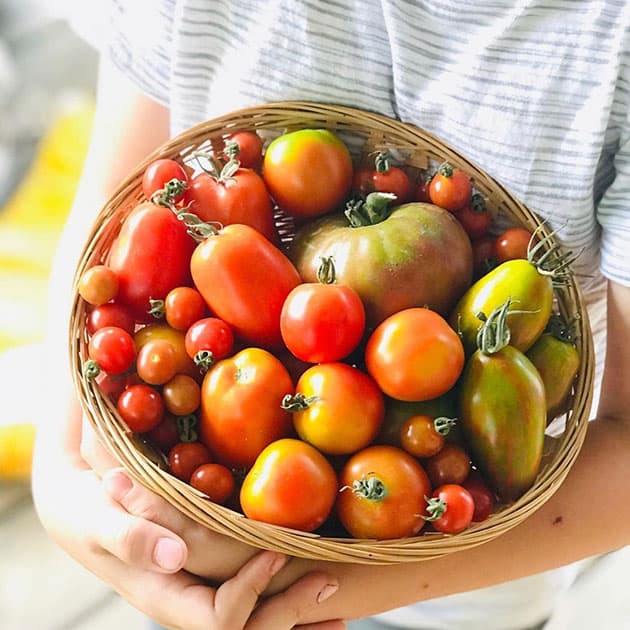
Matt’s Wild tomatoes were brought to Maine by Teresa Arellanos de Mena from her home state of Hidalgo in Eastern Mexico where these tomatoes grow wild.
Teresa gave the seeds to her friend Matt Leibman who was a former Univ. of Maine AG faculty member. Dr. Leibman grew the cultivar in Maine and eventually released it under his name.
In the photo above you can see how Matt’s Wild tomatoes compare to other tomato varieties. They are called cherry tomatoes, but really, are smaller than a cherry tomato. They are marble-size and bright red.
Where to Get Matt’s Wild Seeds…
You’re probably not going to find Matt’s Wild tomato seeds in the stores but they are easily found online. Johnny’s Selected Seeds, Grow Organic, and many other seed companies have them.
Starting Tomato Seeds Indoors…
The best way to grow any variety of tomatoes is to start the tomato seeds indoors on a grow light stand or in a greenhouse about 6 weeks before your last frost.
Tomatoes have very shallow roots and the plants are very big; they produce and grow much better if we plant them very deep (more on this in a minute).
But we can’t plant the seed deep because it won’t germinate, instead, we start the tomato seeds indoors and grow the plants until their stem is pencil size in diameter at the bottom.
Many gardeners repot tomato plants, meaning, they start the tiny seeds in a small cell, and as the plant grows they replant it in a larger and larger container. Every time that they do that, they remove the bottom leaves and plant the seedling as deep as possible to allow more roots to grow from the stem into the soil and produce a larger and stronger root system.
I do it a little differently. I usually start my tomato seeds in 4-inch by 4-inch containers and fill them with just a little bit of soil when I plant the seeds in the center. As the seedlings grow, I add more soil around them. This prevents me from needing to repot the tomato plant. Make sure to check out my video “NO Repotting Tomato Seedlings!” on my YouTube channel to see how I do this.
Also, learn more about indoor seed starting and check out my DIY grow light shelves that I’ve been using for a few years now (or watch the video here).
Before you are going to be able to transplant your tomato plants to the garden, you are going to have to harden them, this means gradually getting them used to the outside world. I explain in more detail about the hardening process in my post about transplanting seedlings so make sure to check it out.
Planting Matt’s Wild Tomato Plants…

Once your tomato plants are ready for planting there are a few important things to consider about Matt’s Wild tomatoes:
When to plant in the garden – like all other tomato varieties, Matt’s Wild plants are very sensitive to cold temperatures. Make sure to plant your plants in the garden after the last frost.
I usually wait two to three weeks after the last frost to plant my tomatoes just to make sure the soil has a little bit of time to warm up and that the air temperature at night is not too low.
Where to plant – you’d want to plant your plants in full sun (8-10 hours) and 18 to 24 inches from each other. Matt’s Wild tomatoes are, well… Wild, and will do just fine if you let them grow wild and crawl all over the place.
However, this makes it really hard to pick the tomatoes and so I really recommend that you trellis or cage your plants (more on this in a minute). You’d have to decide if you want to let the plants crawl or if you want to trellis them. Then make sure that you have enough room to do either or where you plant your plants.
Plant deep – remove the bottom leaves from the stem and dig a deep hole. Plant as deep as you can (leaving the top leaves above soil level) so more roots can grow from the section of stem that is underground.
Feed at planting time – tomato plants are heavy feeders so to provide them with enough food for the first few weeks I add worm castings to the planting hole at planting. I also add lime, or in other words – calcium, to prevent blossom end rot (which is not too common with this variety because they are so small, but I add it anyway just in case).
Mulch – finally, all baby plants benefit from a good layer of straw or leaf mulch to help with transplanting shock.
I have a step by step picture tutorial on how to transplant tomatoes to the garden. If you feel that you need more information about this topic, make sure to check it out.
Trellising Matt’s Wild Tomato Plants…
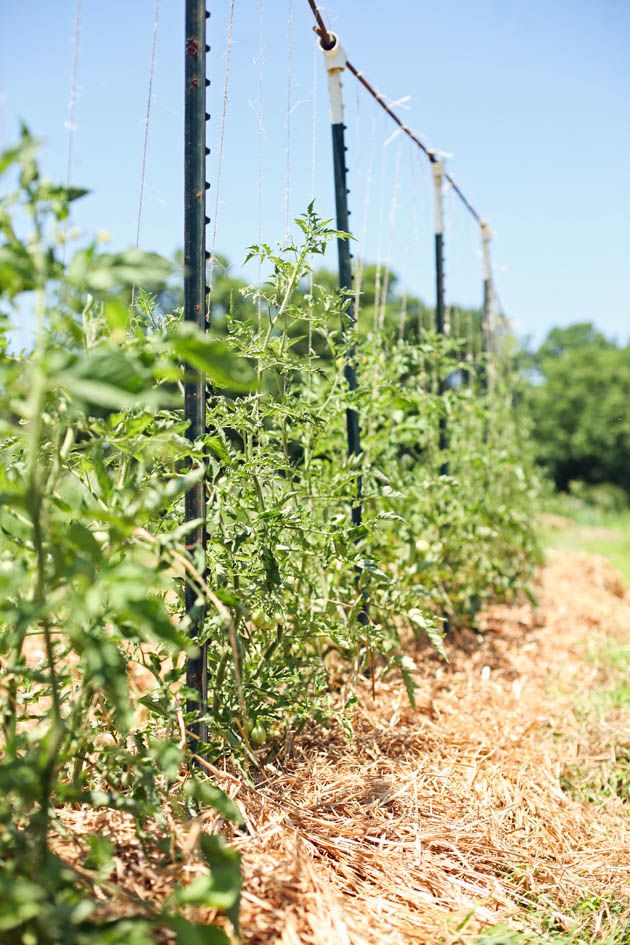
Tomato varieties are divided into two groups… Determinate tomatoes and indeterminate tomatoes.
Determinate tomatoes are short varieties that produce a lot of fruit over a short period of time (like Amish paste and Roma tomatoes for example). These varieties can benefit from support but a wooden stake is usually enough.
On the other hand, indeterminate tomatoes are vines that can grow 10 feet tall if you let them and will produce continuously until the first frost. These varieties need to be supported by a trellis or a cage of some sort.
Matt’s Wild tomatoes are an indeterminate tomato variety and need to be trellised.
There are many different styles of tomato trellises but I like using t-posts, PVC Ts, and rebar. I show you exactly how I build and use this trellis design in my post about how to support tomato plants.
Pruning Matt’s Wild Tomato Plants…
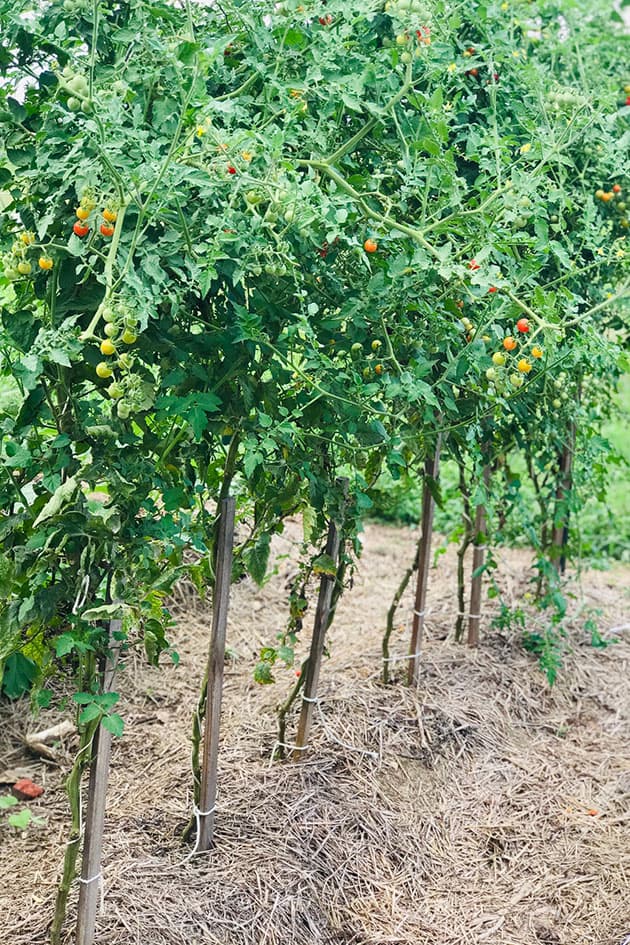
Pruning tomatoes is beneficial for the plants for a few important reasons. When there is less foliage there is more airflow. Good airflow will help prevent diseases and mold.
Less foliage also means less weight and fewer stems and leaves for the root system to have to provide for. It also means that the plant can focus its energy on producing fruit instead of growing leaves.
If you chose to trellis your tomato plants as I do, you are going to have to prune them at least until they reach the top of the trellis (I usually just let them be after that).
I always remove all of the leaves from the bottom foot. This ensures that there are no tomato leaves touching the ground and providing an easy way for crawlers to climb the plant and it’s much easier for me to feed and mulch and weed this way.
Then, as the plant grows, I’ll go over it (almost every day) and prune the suckers which are new stems that grow between the leaf and the main stem. You can see how I do this in this video.
Caring For Tomato Plants…
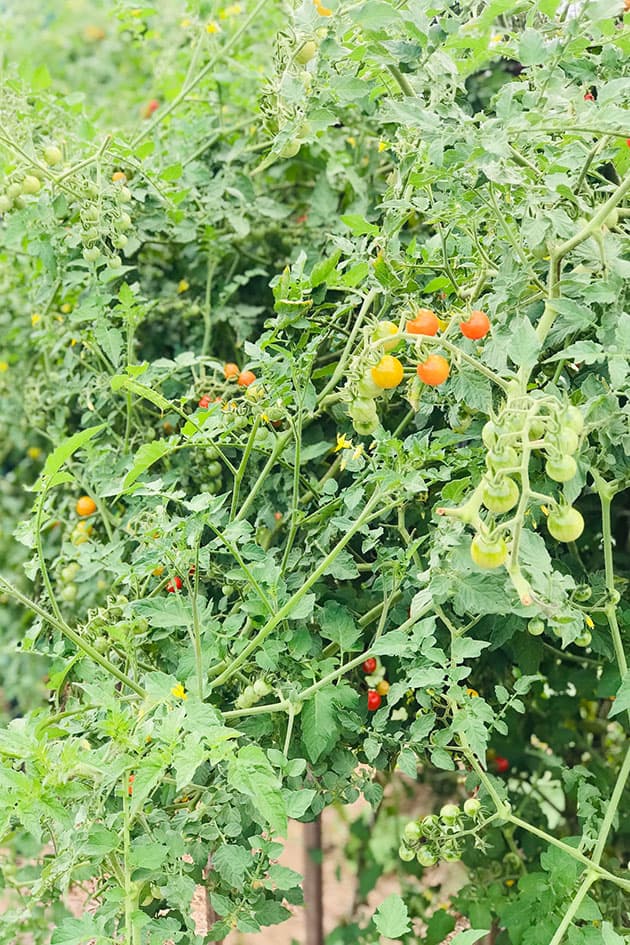
Aside from pruning your plants, there are a few other things that you have to do during the growing season…
Watering – tomatoes, like almost all the other garden vegetables, need about an inch of water a week.
Feeding – I feed my tomato plants every two weeks. I use organic fertilizers like worm castings, fish emulsion, and Espoma. Some people also love to add a tablespoon of Epsom salt to the soil at the base of their tomato plants once in a while.
Removing hornworms – there aren’t a whole lot of pests that bother tomato plants but there are the giant hornworms that can eat half a plant in what seems like two hours! These are the fat green caterpillars with the horn looking thing at the end of their body.
If you want, you can spray your plants with neem oil and maybe that will keep them away, but since I inspect my tomatoes almost daily, I usually remove them by hand and feed them to the chickens.
Mulching – tomatoes love moist soil and the best way to make sure that your soil stays moist is by covering it with straw mulch. Straw also breaks down quickly and it feeds the soil which feeds the plants. And of course, it helps prevent weeds.
Harvesting Matt’s Wild Cherry Tomatoes…
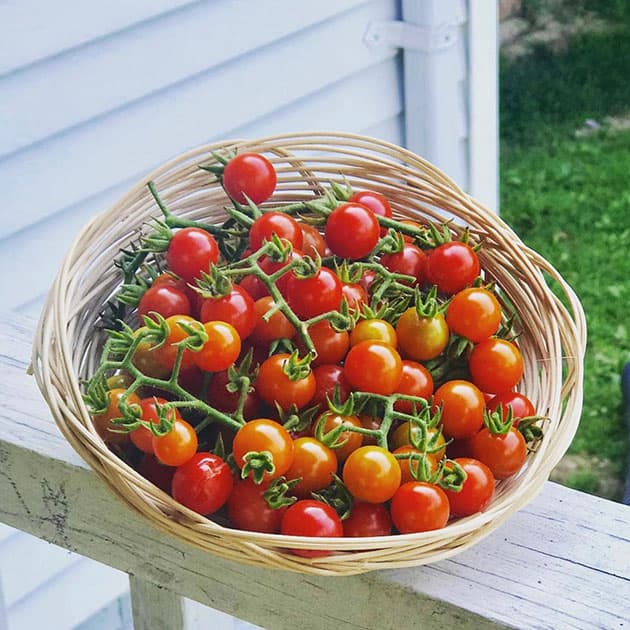
This might be one downside with growing Matt’s Wild tomatoes… Like blueberries and other tiny fruit or vegetables, it takes a little bit more time to pick. Still, totally worth it!
Matt’s Wild tomatoes turn red pretty quickly. Usually, it’s better to pick tomatoes in their green mature stage (the stage where they are not green anymore but not ripe yet either) and let them complete their ripening inside, it’s easy to miss this stage with Matt’s Wild tomatoes because they are so small.
They also have a rather short life after they are picked. You might be able to slow their ripening if you place them in the fridge but if you leave them at room temperature you better use them within a couple of days.
I usually pick a basket of them every morning and use them throughout the day. They are great to grow in a kid-friendly garden because the kids love snacking on them right there in the garden.
Using Matt’s Wild Cherry Tomatoes…
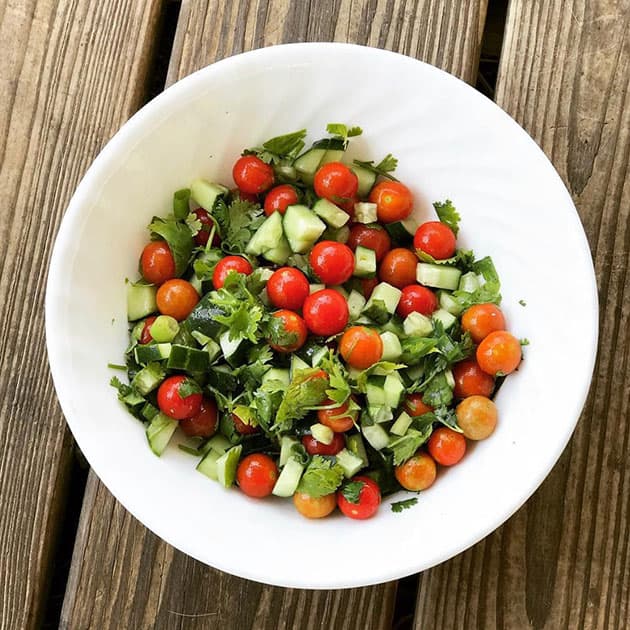
Matt’s Wild tomatoes are mainly used as a snack or a side to a sandwich or some other easy lunch or in salads. You can add them to just about any salad. Simply throw them in, there is no need to cut them.
Our favorite salad is this simple Israeli salad that you see in the picture above. We eat it every day with pretty much every main meal. You can watch me make it and get the recipe here.
Producing Until The First Frost…
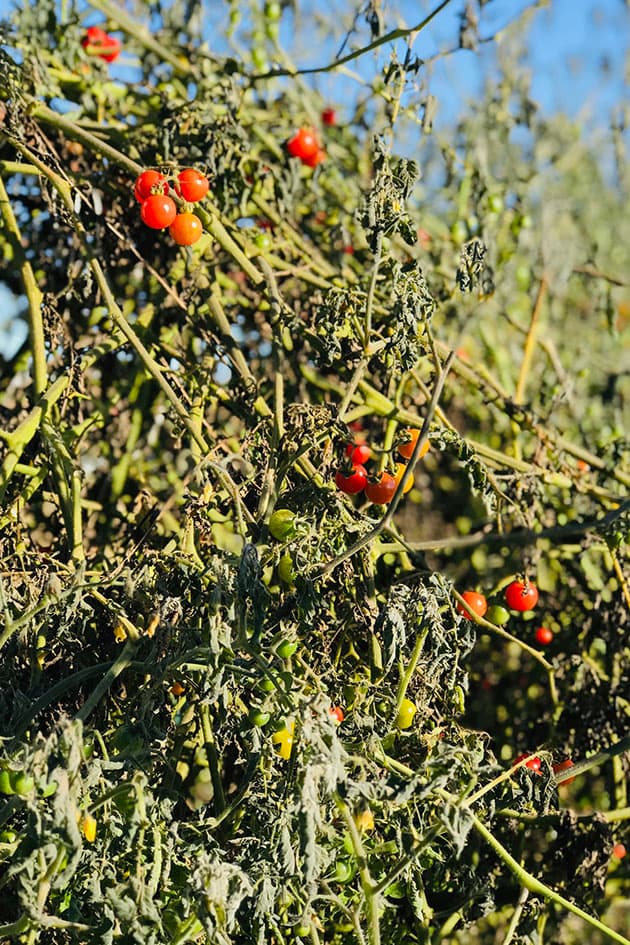
Maybe my favorite thing about Matt’s Wild tomatoes is that they just keep giving until the first frost.
You’ll hear about a lot of indeterminate tomatoes that they will keep producing until the frost but let me tell you what really happens… Once the weather starts cooling down the green tomatoes that are on the vines won’t die, but they’ll slow way down and it will take them forever to turn red.
With Matt’s Wild, since the tomatoes are so small and it’s so easy for them to ripen they just keep doing it!
Then comes the first light frost and the plants might have some frost damage as you can see in the photo above but the tomatoes are still fine. We keep picking them until the night when temperatures go below 30 degrees F. Then the tiny tomatoes will freeze and they won’t be so good anymore.
Here in the South (I’m in central NC, zone 7b), this might happen sometime in November. Imagine eating fresh tomatoes from the garden almost all the way to Thanksgiving!
All right, that was a lot of information and I hope it was helpful! I really love this tomato variety and I hope that you’ll give it a try.
One last thing… Matt’s Wild tomatoes reseed themselves! During the season, a bunch of little tomatoes will fall on the ground and next spring when the weather starts to warm up they will be sprouting everywhere.
Although it’s tempting to just let them grow (and you can certainly do that) they make a whole lot of mess in the garden because they sprout in the walkways and just about anywhere else.
I dig some of the baby plants up and sell them at the local farmer’s market. I also give some as gifts to friends. Anything to spread the tomato love!
Also, you should know that since they are an heirloom variety you can easily save seeds for next year.
More Tomato Content on the Blog…
I linked to a lot of tomato posts above but here are a few more…
Make sure to learn how to preserve your tomatoes! Here is how to ferment tomatoes (I’ve never tried it with Matt’s Wild but it’s definitely on my to-do list!).
If you grow other kinds of tomatoes here are tutorials on how to can tomato sauce, how to can stewed tomatoes, how to can marinara sauce, and how to can crushed tomatoes.
And lastly, the trick that changed my summers… Did you know that it’s super easy to freeze tomatoes and process them later? It’s a trick that you have to learn!
More Growing Guides on the Blog…
If you liked this growing guide, make sure to check these as well…
The Complete Guide to Growing Potatoes



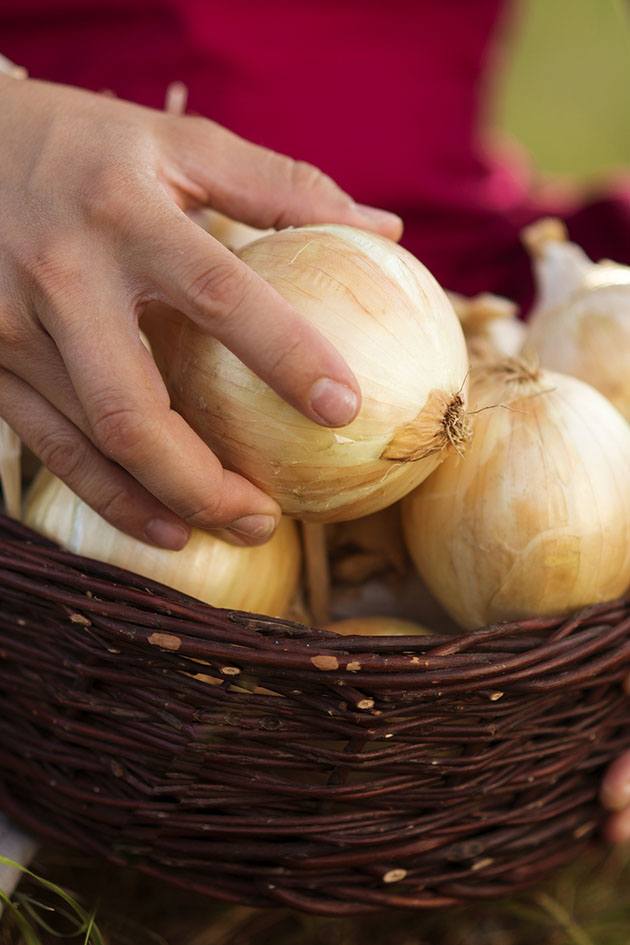
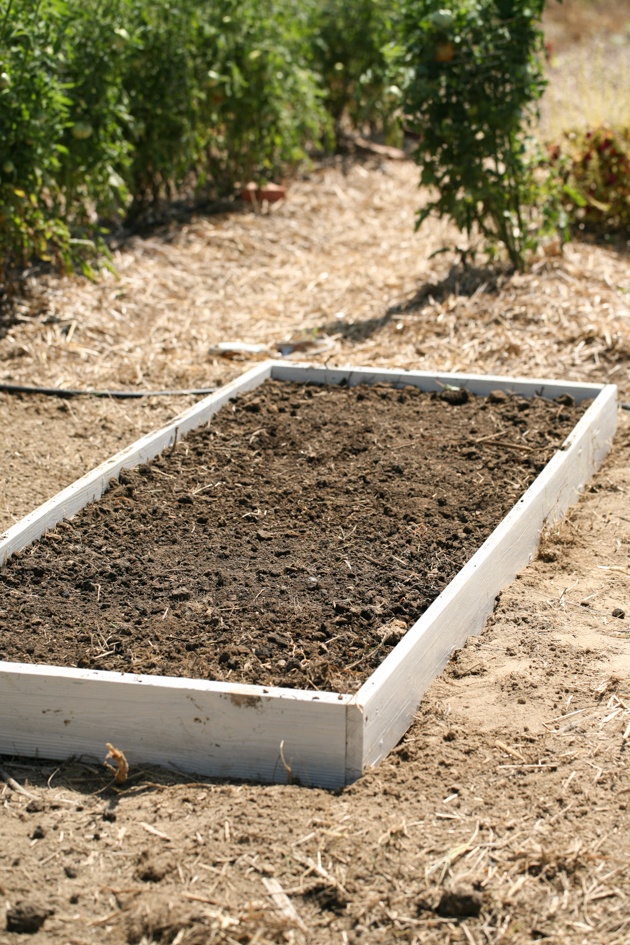
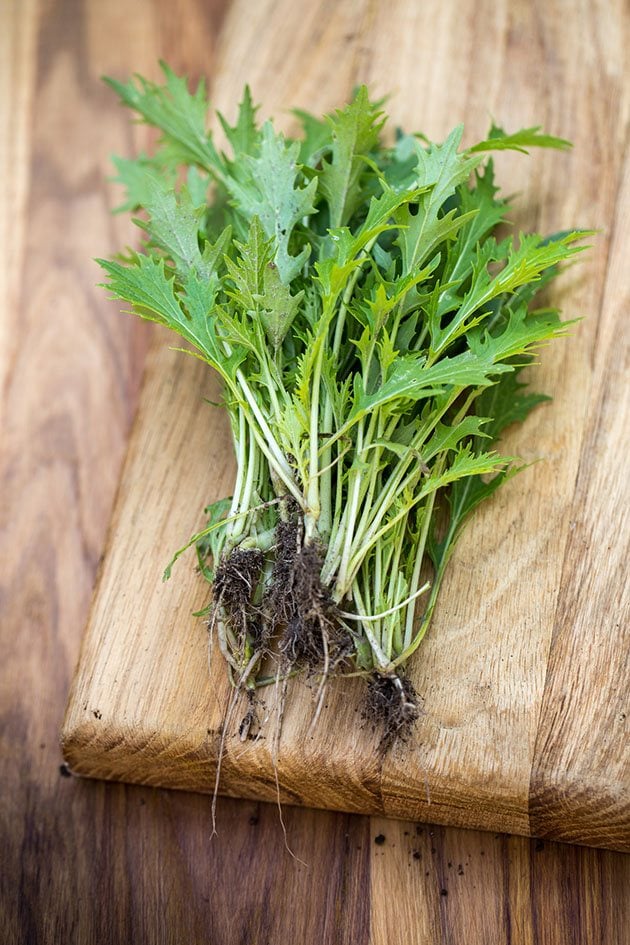
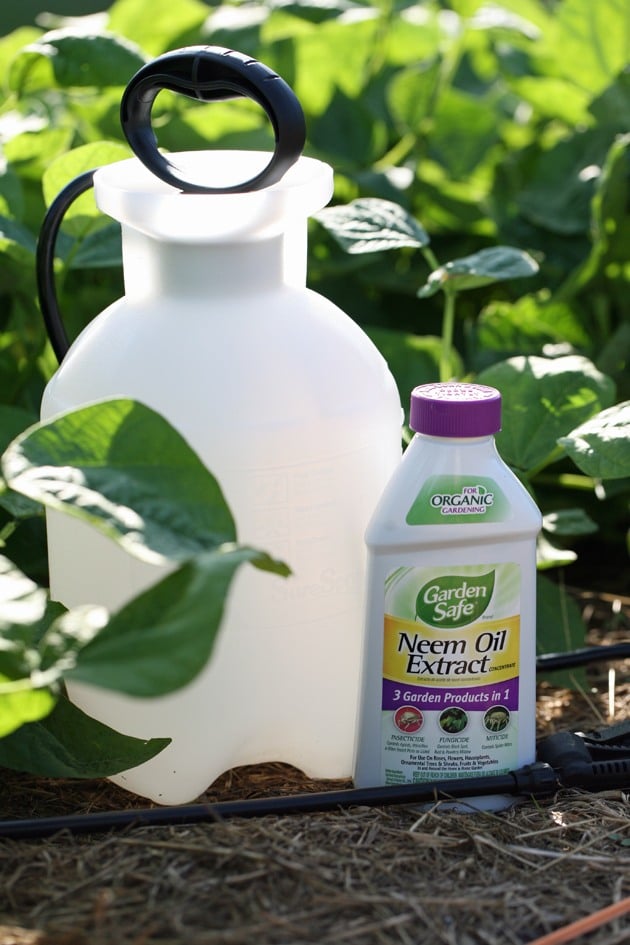
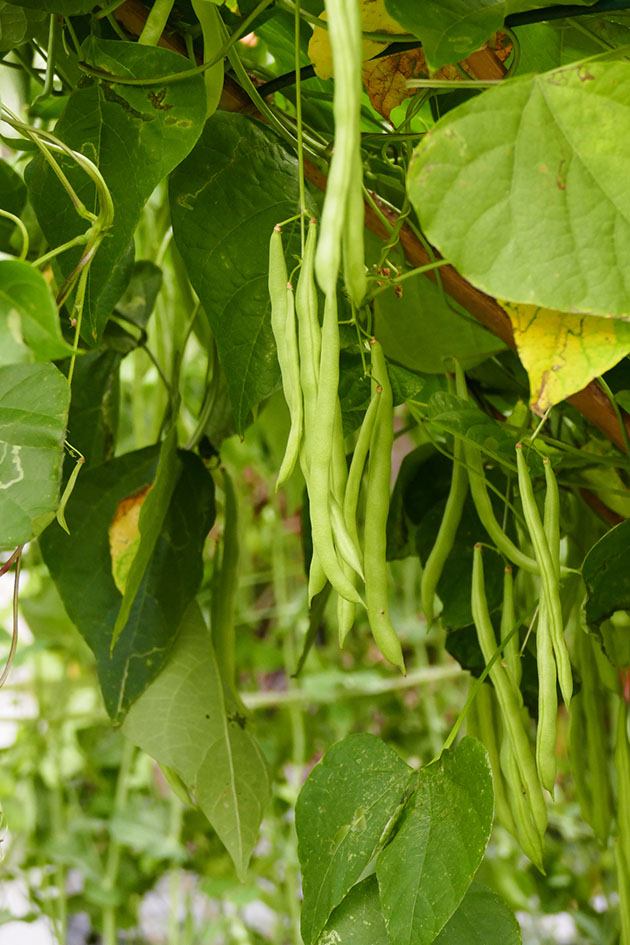
My wife got one of these tomato plants about 3 years ago. It produces so many tomatoes that inevitably some fall onto the soil. We’ve had literally dozens of volunteer plants ever since. We literally do nothing to them – no fertilizer, no pruning, and we get hundreds of tomatoes.
Yup! Me too. In fact, I am thinking of not staring any other tomato indoors next year. I know that I’ll have more than a few Matt’s Wild tomato plants coming up in the garden and they are truly all that I need.
Cherry tomatoes are great for trellis. They are not heavy as the normal tomatoes. I’ve tried wooden trellis with normal one with a bad experience.
You are right. In fact, I think that they are just much easier to grow all around. They aren’t heavy and don’t break the plant, they mature quickly, one plant can produce a ton of them, they don’t have blossom end rot, they are full of taste, and on and on! This year, I am only growing cherry tomatoes for all these reasons.